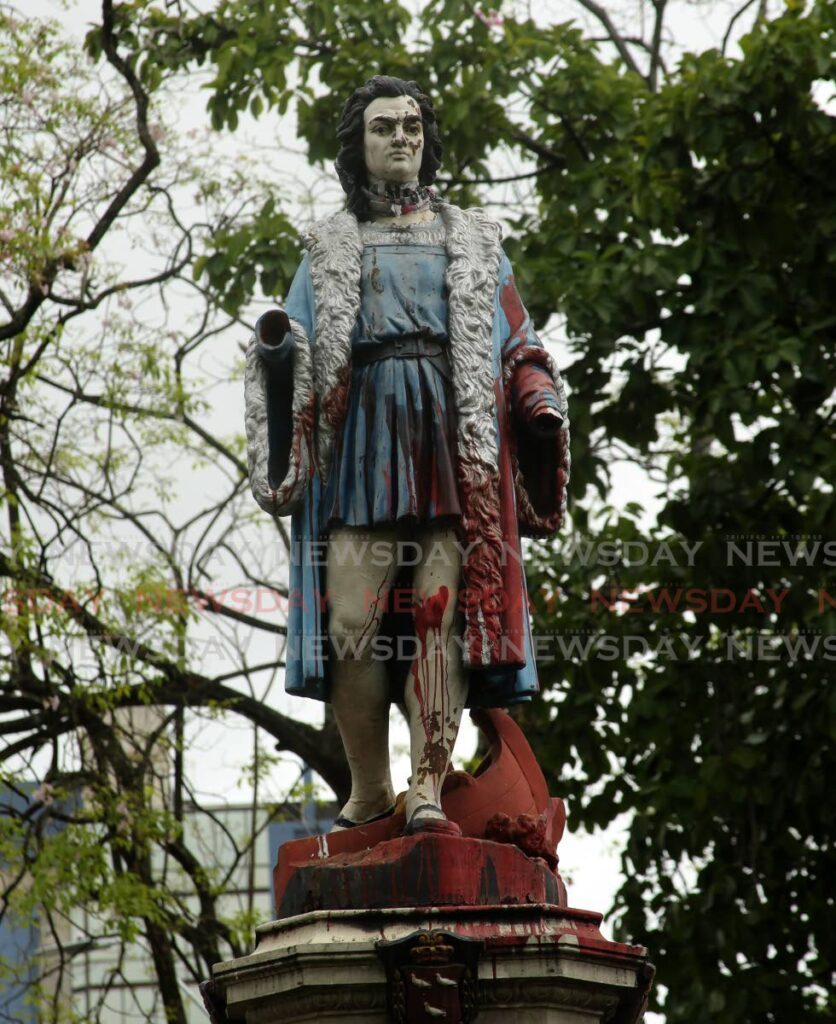Heat over monuments

THE debate over removing monuments to colonisers took a dark, aggressive turn during the session convened at Government Plaza, Port of Spain on August 28.
The discourse devolved dramatically after one member of the audience attempted to shout down another, yelling at a woman, "I would ask you to go back to Africa."
Clearly there are deep-seated sentiments at play here, even among a microcosm of less than 50 concerned citizens gathered in the auditorium.
Fuelling much of this emotion are threads of learned history that may not have kept pace with the evolving understanding of Caribbean history and specifically what happened in our twin-island state.
A legacy of sanitised history has led to widespread misunderstandings about the people immortalised in our inherited street names and statues and what they actually did to the indigenous, indentured and enslaved people who were our ancestors.
An updated national reassessment of our colonial past is overdue.
Until the turn of the century, the study of West Indian history offered a hero myth of Christopher Columbus as the discoverer and saviour of the Caribbean.
This nancy story of the colonist as saviour of the indigenous people and deliverer of pagans into Christianity still persists.
It wasn't until 2023 that the Doctrine of Discovery was formally repudiated by the Catholic church. That papal decree gave a religious underpinning to the bluntly economic exploitation that drove an exploration of the world in search of resources and the expansion of empire.
Three key papal bulls, the first issued in 1452, were held as justification for murder, destruction, forced assimilation, rape and genocide by Spanish explorers.
The Doctrine of Discovery was abrogated legally and nullified by the Vatican in the 1530s, but the idea lived on. The US Supreme Court used the idea in 1823 to declare that the indigenous people of the Americas only had rights of occupancy, not ownership of the lands they lived on.
TT is part of a larger global reassessment of the messages sent by monuments to colonisers, dictators and outdated political movements.
The US has had fierce discussions over Confederate monuments and memorials which lionise defenders of slavery.
Colonial-era statues in African nations have been removed, though some have been returned, supported by coloniser-nation economic interests and neo-colonial movements.
What's to be done with colonial-era monuments? Some statues have been returned to colonial metropoles. Others have been destroyed or defaced. The most sensible approach seems to be preserving and re-contextualising them.
Arguments about cultural erasure gloss over the fact that these monuments erase indigenous cultural sites and history and always establish a presence that redirects historical contemplation to the coloniser's perspective.
The discussion is important. The actions we take should be measured and effective. Emotion should be tempered by shared knowledge at every step in the process.

Comments
"Heat over monuments"